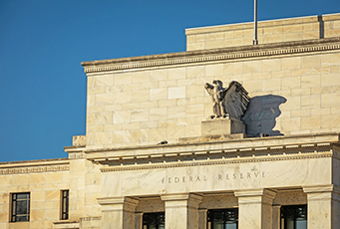On May 27th, the movie “Top Gun: Maverick” will be in theaters 36 years after the release of the original Top Gun. In a famous scene from the original, Tom Cruise describes how he (and Goose) were inverted and could take an up-close Polaroid that proved the government’s analysis of the enemy’s capabilities did not accurately reflect reality. What does this have to do with the bond market?
Recently, the bond market also inverted. Historically, this inversion has often indicated that the economy was headed into a recession and that the prevailing opinion of a growing economy did not accurately reflect reality.
The Top Gun scene was a prelude to a battle with the enemy that would take place later in the movie. Will the inverted yield curve also be a prelude to a tougher economic time, where the Fed battles the recessionary enemy?
What is an Inverted Yield Curve?
An inverted yield curve happens when shorter-term interest rates are higher than longer-term interest rates.
As I write this, the Wall Street Journal’s markets page depicts an inverted yield curve where the 10-year and 30-year U.S. Treasury Bonds are yielding less than a 3-year Treasury Bond. Not by much, but the inversion is there.
If you are a glass-half-full person, you might note that rates for the 2-year and shorter Treasuries are still below the longer-term yields.
One can debate whether this truly represents a fully inverted yield curve. Still, regardless of that distinction, the bond market is signaling the risk of an economic slowdown is real.
The Federal Reserve’s Role
Earlier in March, when the Federal Reserve increased interest rates for the first time since 2018, the yield curve flattened. Short-term rates rose, and long-term rates fell. Short-term rates rose because the Fed indicated more increases were on the way. Long-term rates fell because the aggressive stance taken by the Fed will likely slow longer-term economic growth. Typically, the short end tracks the Fed’s movements, and the long end follows the economy.
Another seven or eight interest rate increases appear to be on the way. If the Fed sticks to this plan, the result will likely be slower economic growth and slower inflation, but not necessarily a recession.
Does the Yield Curve Inversion always precede a recession?
Yes. However, a recession does not always follow an inversion. For example, parts of the yield curve inverted several times, and a recession did not follow.
I would argue that sometimes the statistical relationship can be coincidental.
The recession that began after 9/11 followed an inversion around the turn of the millennium. If 9/11 did not happen, do we have the short recession that ended in 2002? Eventually, but a recession was not inevitable.
The yield curve also inverted near the end of 2019, just a few months before the start of the pandemic. Was the bond market thinking about the pandemic that would cause a recession? No. Other economic forces suggested a slowing of the economy, but a recession, while possible, did not seem imminent.
What Should You Do?
We have witnessed a significant economic rebound from the pandemic recession. Unfortunately, that recovery has brought with it high inflation. The Fed will work hard to lower inflation, which will likely result in an economic slowdown. These slowdowns happen and are a normal part of the economic cycle. The next recession could be in the next 12 to 18 months, or the Fed might engineer a soft landing with no recession.
Your investment strategy should consider the likelihood of experiencing the occasional recession. If it does, you have already factored slowdowns into your long-term plans. However, if you are worried about the financial impact of a slowdown, you should reconsider your personal risk tolerance and the amount of risk in your portfolio.
If you need help, contact your financial advisor, he/she can be your wingman/woman!
Schedule a Consultation
We have helped our clients answer these questions and more. If you want a clear understanding of your financial future, and need help making changes to reach your goals, schedule a consultation and we can get started.
Please remember that past performance may not be indicative of future results. Prior to implementing any investment strategy referenced in this article, either directly or indirectly, please discuss with your investment advisor to determine its applicability. Any corresponding discussion with a Bedel Financial Consulting, Inc. associate pertaining to this article does not serve as personalized investment advice and should not be considered as such.
Recommended Articles
Private Equity and M&A in a Low-Rate World
Deal flow is the stream of business proposals, investment...





